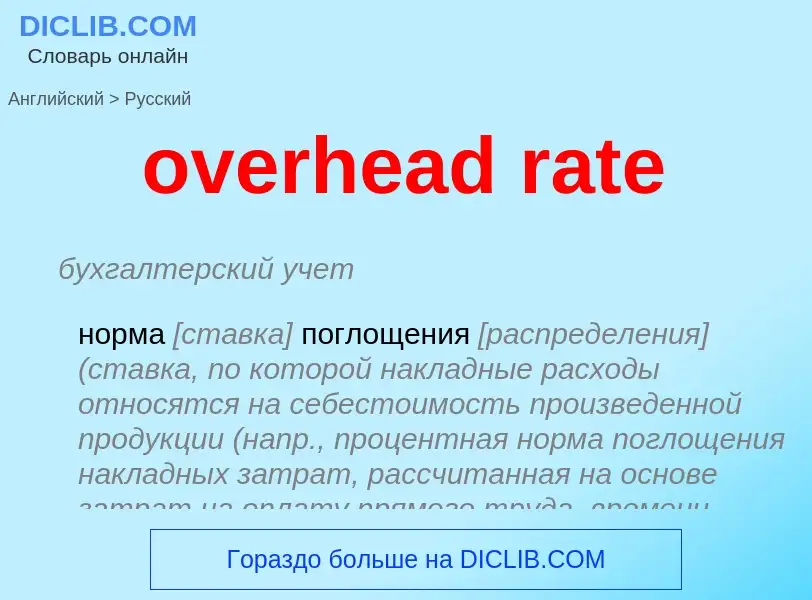Translation and analysis of words by ChatGPT artificial intelligence
On this page you can get a detailed analysis of a word or phrase, produced by the best artificial intelligence technology to date:
- how the word is used
- frequency of use
- it is used more often in oral or written speech
- word translation options
- usage examples (several phrases with translation)
- etymology
overhead rate - translation to English
бухгалтерский учет
норма [ставка] поглощения [распределения] (ставка, по которой накладные расходы относятся на себестоимость произведенной продукции (напр., процентная норма поглощения накладных затрат, рассчитанная на основе затрат на оплату прямого труда, времени прямого труда или машино-часов))
синоним
Смотрите также
бухгалтерский учет
нормативная [заданная] ставка распределения накладных расходов (ставка отнесения производственных накладных расходов на себестоимость продукции, которая рассчитывается как отношение суммы запланированных накладных расходов за период к сумме ожидаемых показателей деятельности за этот же период (напр. к сумме машино-часов или часов прямого труда); используется в расчете нормативной себестоимости)
синоним
Definition
Wikipedia
A pre-determined overhead rate is the rate used to apply manufacturing overhead to work-in-process inventory. The pre-determined overhead rate is calculated before the period begins. The first step is to estimate the amount of the activity base that will be required to support operations in the upcoming period. The second step is to estimate the total manufacturing cost at that level of activity. The third step is to compute the predetermined overhead rate by dividing the estimated total manufacturing overhead costs by the estimated total amount of cost driver or activity base. Common activity bases used in the calculation include direct labor costs, direct labor hours, or machine hours.
This is related to an activity rate which is a similar calculation used in Activity-based costing. A pre-determined overhead rate is normally the term when using a single, plant-wide base to calculate and apply overhead. Overhead is then applied by multiplying the pre-determined overhead rate by the actual driver units. Any difference between applied overhead and the amount of overhead actually incurred is called over- or under-applied overhead.


